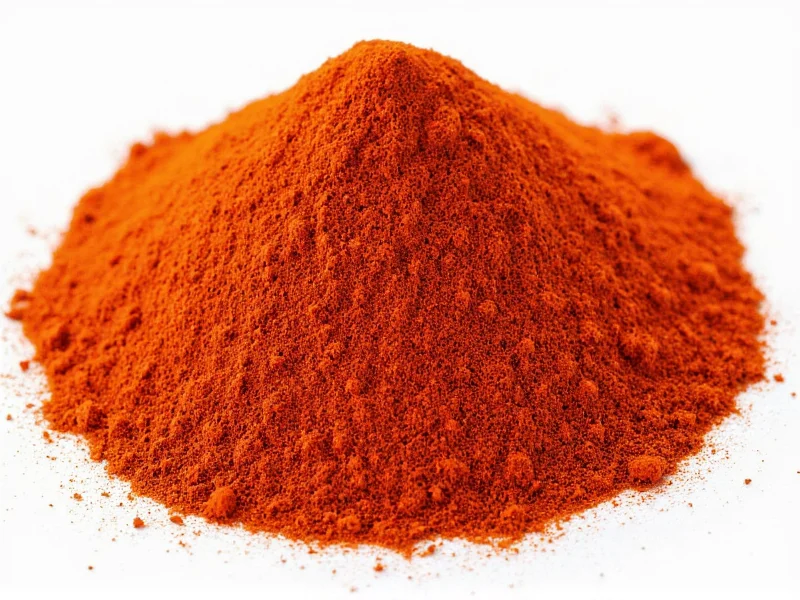When you're standing in the spice aisle wondering whether you can use that bottle of paprika for your recipe calling specifically for sweet paprika, understanding the distinctions matters. The simple truth is that while all sweet paprika is paprika, not all paprika is sweet paprika. This common confusion stems from labeling practices and regional differences in how these spices are marketed and used.
Understanding Paprika Varieties
Paprika is made from grinding dried peppers, primarily from the Capsicum annuum family. The specific peppers used, their ripeness, and processing methods determine the final product's flavor profile. What many consumers don't realize is that "paprika" on a label could mean several different things depending on where you are in the world and which brand you've purchased.
The Main Types of Paprika
To clarify the sweet paprika versus regular paprika question, it's essential to understand the primary categories:
| Type of Paprika | Flavor Profile | Heat Level (Scoville) | Common Regional Names |
|---|---|---|---|
| Sweet Paprika | Mild, slightly sweet, earthy | 0-100 SHU | Hungarian sweet, Spanish dulce |
| Hot Paprika | Spicy, pungent | 500-1,000 SHU | Hungarian erős, Spanish picante |
| Smoked Paprika | Smoky, complex | Varies (sweet to hot) | Spanish pimentón |
Why the Confusion Exists
The term "regular paprika" doesn't actually exist as a standardized category. In most North American supermarkets, the default paprika sold simply as "paprika" is actually sweet paprika. This labeling practice has created widespread misunderstanding about whether sweet paprika and paprika are different products.
When recipes specify "sweet paprika," they're often doing so to distinguish it from hot or smoked varieties that might be available in specialty stores or international markets. In regions where multiple paprika varieties are commonly sold side-by-side, specifying "sweet" becomes necessary to avoid confusion.
Regional Differences in Paprika
The distinction between sweet paprika and other varieties becomes more pronounced when examining regional differences:
- Hungarian paprika: Considered by many chefs to be the gold standard, with 8 official varieties ranging from mild and sweet (Édesnömör) to intensely hot (Erős)
- Spanish paprika (pimentón): Often smoked over oak fires, with varieties labeled dulce (sweet), agridulce (bittersweet), and picante (hot)
- American paprika: Typically mild and sweet unless specifically labeled as hot or smoked
Culinary Implications: Does the Difference Matter?
For the difference between sweet paprika and regular paprika question, the culinary impact depends on your recipe:
- Substitution in most everyday cooking: If a recipe calls for "paprika" without specification and you have sweet paprika, they're generally interchangeable in standard American recipes
- Traditional Hungarian dishes: Using hot paprika instead of sweet in dishes like chicken paprikash would significantly alter the intended flavor profile
- Smoked versus non-smoked: This represents the most significant flavor difference—smoked paprika adds a distinct campfire note that sweet paprika lacks
Practical Guidance for Home Cooks
When navigating the sweet paprika versus paprika question in your kitchen:
- Check your label carefully: If it just says "paprika" without modifiers, it's almost certainly sweet paprika in North American markets
- Understand recipe origins: Hungarian recipes often assume sweet paprika unless specified otherwise, while Spanish recipes might expect smoked
- When substituting: Sweet paprika can replace regular paprika in nearly all cases, but hot or smoked varieties require more consideration
- Storage matters: All paprika varieties lose potency quickly—store in a cool, dark place and replace every 6-12 months for best flavor
Common Misconceptions About Sweet Paprika
Several myths persist about sweet paprika that contribute to the confusion:
- Myth: Sweet paprika contains added sugar
Truth: The "sweet" refers to the pepper variety used, not added sweetness - Myth: All paprika is spicy
Truth: Most standard paprika is completely mild - Myth: Sweet paprika and bell pepper powder are the same
Truth: While both come from sweet peppers, paprika has a more complex flavor profile
When Substitution Really Matters
While sweet paprika and standard paprika are often interchangeable, certain dishes demand specificity:
- Traditional goulash: Requires Hungarian sweet paprika for authentic flavor
- Paella: Benefits from Spanish smoked paprika (pimentón)
- Deviled eggs: Sweet paprika provides the classic mild flavor
- BBQ rubs: Smoked paprika creates a completely different profile than sweet
Understanding the difference between sweet paprika and regular paprika prevents recipe mishaps and helps you make informed choices at the grocery store. The next time you're wondering whether you can substitute sweet paprika for regular paprika, remember that in most cases, they're the same product—just labeled differently based on regional conventions and marketing practices.











 浙公网安备
33010002000092号
浙公网安备
33010002000092号 浙B2-20120091-4
浙B2-20120091-4